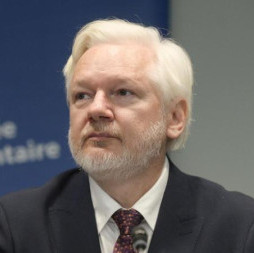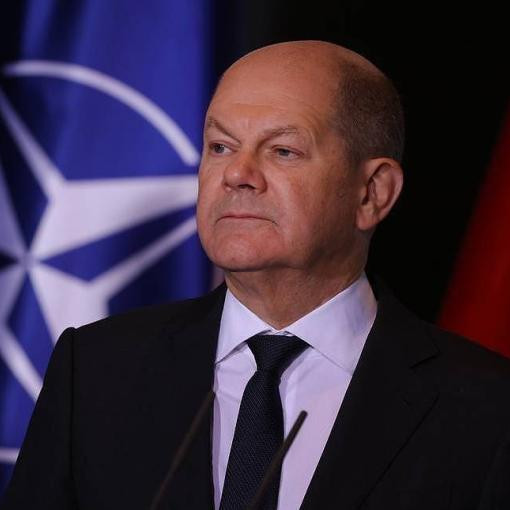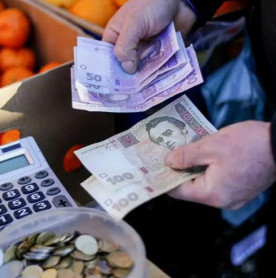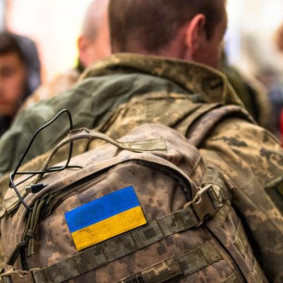
North Korean diplomat visits Russia after Pyongyang’s solid-fuel hypersonic missile test; the US presidential primary election season kicks off as former President Donald Trump leads in the high-stakes early Republican Party caucus vote in Iowa; and developing economies may account for more than 60% of global GDP by 2026. These stories topped Tuesday’s newspaper headlines across Russia.
Izvestia: Top North Korean diplomat’s Russia visit raising hackles in Seoul, Tokyo
Seoul and Tokyo are concerned over the growing cooperation between Russia and North Korea against the backdrop of a visit by North Korea’s top diplomat to Moscow, growing tensions with Pyongyang and the threat of escalation on the Korean Peninsula. North Korean Foreign Minister Choe Son Hui is visiting Russia on January 15-17 at the invitation of her Russian counterpart, Sergey Lavrov. South Korea said it was watching her visit closely. It is worth noting that Choe is viewed as a nuclear negotiator, as she has repeatedly participated in multilateral negotiations on Pyongyang’s nuclear program, including with former US President Donald Trump.
Choe’s visit is mostly aimed at implementing the agreements reached between the two countries’ leaders and foreign ministers, Kim Young Woong, a senior research fellow of the Center for Korean Studies at the Institute of China and Contemporary Asia of the Russian Academy of Sciences, told Izvestia. "We maintain strategic dialogue, at a lower profile level, and discuss issues related to adding more diplomats, as North Korea’s borders were closed in the past four years," the expert said. "In addition, now, there is an opportunity to expand commodity trade and, therefore, use the ruble more extensively," he added.
The visit came immediately after North Korea’s latest missile launch, a fact that the South Korean press placed heavy emphasis on. North Korea announced the maiden launch of a solid-fuel intermediate-range ballistic missile with a hypersonic warhead. Such missiles can hit, say, US naval bases in Guam and Japan, according to South Korean military experts. While the weapon can reach Seoul, in particular, in a minute’s time, at present, neither South Korea nor even the United States has an effective system at its disposal to intercept such missiles, the Korea Times quoted experts as saying.
"Guam is actually a US territory that hosts [US Air Force] bombers, which can be scrambled in the event of a military operation on the Korean Peninsula. That is, it is from Guam that the United States would dispatch its warplanes to fulfil its obligations to its allies, South Korea and Japan," Dmitry Streltsov, head of the Department of Asian Studies at Moscow State Institute of International Relations (MGIMO University) and an expert of the Valdai Discussion Club, told Izvestia.
South Korean, US and Japanese special envoys on nuclear issues jointly discussed Pyongyang’s latest test-launch as they reiterated that a relevant UN Security Council (UNSC) resolution bans North Korea from using the ballistic missile technology. They also expressed concern over the alleged intensification of military cooperation between Russia and North Korea and agreed to "take concerted action." The three sides also pledged to strengthen their coordination on North Korea-related issues at the UNSC. However, any anti-Russian initiatives stand little chance of being adopted, given Russia’s status as a UNSC permanent member, Streltsov noted, even though he believes that provocations in the information space are entirely possible.
Vedomosti: US primary season kicks off as Trump leads in high-stakes early vote in Iowa
On January 15, Republican caucuses were held in the key farm state of Iowa in the first contest for the Republican Party’s nomination for this year’s US presidential election in November. The nomination will be formalized at the Republican National Convention in mid-July in Milwaukee after all state primary elections and caucuses are held to decide the winner. According to the preliminary results in Iowa, former US President Donald Trump cruised to victory, with Florida Governor Ron DeSantis finishing second, trailed by former South Carolina Governor and US Ambassador to the United Nations Nikki Haley and biotech entrepreneur Vivek Ramaswamy. Voter preference data from exit polls and opinion surveys showed that Trump’s lead was virtually locked-in.
According to the final pre-vote opinion polls in Iowa, published jointly by NBC News, the Des Moines Register and Mediacom Poll on January 13, as many as 48% of potential voters said they intended to vote for Trump. With full official results expected later today, his lead may be the largest in Republican caucus records since 1988.
The presidential caucuses held in Iowa, and in some other states, differ from primary elections in that they are held exclusively for party members. Independents or Democrats may vote, too, however, if they register as Republicans on caucus night in order to participate. In line with this year’s updated rules and primary schedule, the Democratic Party’s presidential primaries will kick off in South Carolina only on February 5.
The early Iowa vote matters mainly because it shows the initial balance of power, says Lev Sokolshchik, senior researcher at the Center for Comprehensive European and International Studies at the Higher School of Economics (HSE University). The outcome of such a high-stakes vote will have an impact on donor support for candidates, as well as the motivation of supporters to vote for the candidate of their choice, the span of media coverage and other nuances of the US’ unique electoral process, as well, says political strategist Pavel Dubravsky, who heads the Dubravsky Consulting think-tank. Haley and DeSantis will battle for second place to see who can best corral the support of the "Never Trump" contingent in the GOP or those undecided voters who are still sitting on the fence. If Trump sweeps the vote in all states holding primaries before early March and on Super Tuesday on March 5 (when 16 states, or the largest number on one day, will vote - Vedomosti), he will be able to gather the necessary number of delegates to clinch the Republican nomination already by late March. "And Trump’s election campaign headquarters has already announced that [he will win the nomination]," the expert concluded.
Izvestia: Developing economies forecast to account for more than 60% of global GDP by 2026
The share of developing economies, including Russia, in global GDP will exceed 60% by 2026, according to the latest report from the Association of Banks of Russia (ABR). Developing markets can no longer be designated as "peripheral" in economic terms amid the "global rupture" occurring in a world economy where the balance of power is shifting. Moreover, developing countries will see 4% annual growth, while the G7 economies will grow by only 1.6%, the Russian Economic Development Ministry forecasts. Therefore, Russia’s pivot to Asia is an absolutely correct decision. While this week’s World Economic Forum (WEF) meeting in Davos, Switzerland, will focus mostly on high interest rates, sovereign debt and other problems facing Western economies, experts see little sense in discussing growth without including developing markets in the equation.
According to ABR Vice President Alexey Voilukov, the global sanctions imposed on Russia and Moscow-friendly countries in 2022, as well as the realization that industrial production and commerce should be reformed, have deepened ruptures in the global economy that first emerged in 2018, when the United States and China began a major trade war. Last year, developing markets accounted for about 58.8% of global GDP, with Asian economies making a weighty contribution, Voilukov noted.
And the share of developing markets in global GDP will continue to grow, with such markets proving lucrative for investors, Yelena Voronkova, associate professor at the Plekhanov Russian University of Economics, told Izvestia. Such markets are open to structural changes as they have vacant niches in promising industry sectors and abundant resources. In addition, developing economies have amassed huge foreign currency reserves with such holdings including a high share of gold as a safe haven asset, Voronkova added.
The important role of Russia in the developing world cannot be denied, says Natalya Milchakova at Freedom Finance Global. Russian President Vladimir Putin has said that the Russian economy is the largest in Europe in terms of purchasing power parity (PPP) and, according to the Economic Development Ministry, it is the fifth-largest economy in the world overall. According to the ministry, further down the road, Russia-BRICS cooperation will play a major role. The share of Russia’s BRICS allies in the country’s trade went up 1.5-fold in 2023 and will exceed 50% in the next few years, given the expansion of the intergovernmental group.
Vedomosti: Russia’s revenues from uranium exports to US hit 2020 high
In January-November 2023, Russia increased natural uranium (U308) sales to the United States in monetary terms to the highest since 2020 as it earned more than $1 bln, according to the US Statistics Bureau.
In monetary terms, in the first eleven months of last year, Russian uranium exports to the US outweighed the figure for all of 2022 by 33%. In 2022, the US purchased $766 mln worth of uranium from Russia, and in November 2023, Russia regained the status of the world’s largest uranium supplier to the US since last May.
To Sergey Grishunin, managing director at the National Rating Agency (NRA), the 2023 growth was due to soaring prices rather than a rise in volumes. With Washington discussing limiting Russian uranium purchases, US buyers may be scooping the metal up for future use, he said. While the NRA expects uranium exports to top $1.1 bln for all of 2023, Finam puts the figure at a more modest $1.05 bln to $1.08 bln.
In 2024, barring additional sanctions or other restrictions, Russian uranium exports to the United States may reach $900 mln to $1 bln due to a forthcoming price correction amid a cheapening of other energy resources, Grishunin forecasts. Alexey Kalachyov at Finam attributes the current price growth to a revived global interest in nuclear energy amid decarbonization and the impact of the 2022 energy crisis. He does not expect such strong growth to continue, however, as there is no deficit of uranium in the market.
While Grishunin sees risks of further US sanctions on Russian uranium, any embargo will likely be postponed, he says. Russia does not currently have any alternative export markets that are as large as the US, nor can the US find a more competitive fuel source in price terms, so the expert sees a gradual diversification away from Russian supplies as more likely. Kalachyov also believes that sanctions are hardly likely to be imposed. According to him, the US market is the largest in terms of the number of operating power units, and in 2020, it accounted for half of all uranium sales by Russia’s nuclear powerhouse Rosatom.
Kommersant: Chinese yuan takes top spot to become most traded currency on Moscow Exchange
In 2023, the share of the Chinese national currency trading on the Moscow Exchange (MOEX) reached almost 42%, toppling the US dollar as the premier currency. Demand for the currencies of other Russia-friendly economies is rising, too, but they still account for only a minor share in total trading volume. While over-the-counter trading in the UAE dirham and the Indian rupee saw a substantial increase, as well, exchange trading in these currencies has not been launched yet due to the risk of secondary sanctions.
In 2022, the US dollar and the euro accounted for some 87% of the forex market, but the two currencies’ combined share shrank to a little over 50% of the market last year. Meanwhile, trading in the yuan rose almost three-fold over the past year to 34.2 trln rubles ($390 bln).
According to Mikhail Vasilyev, chief analyst at Sovcombank, the arrival of other friendly countries on the MOEX is hampered by the underdevelopment of external infrastructure for trading on foreign platforms across numerous developing countries. "Lots of players smaller than China are being suppressed by the United States and the risks of secondary sanctions because of Russia. And many countries are content with the dollar-centricity of the global financial system," he added.
In this light, any further flow of liquidity from unfriendly currencies will go to the currencies already present on the MOEX, mostly the yuan. "Any growth of popularity of alternative 'friendly' currencies will mostly rely on the volume of foreign trade between Russia and the relevant nations," Vladimir Yevstifeyev, head of analytics at Zenit Bank, noted.
TASS is not responsible for the material quoted in these press reviews








